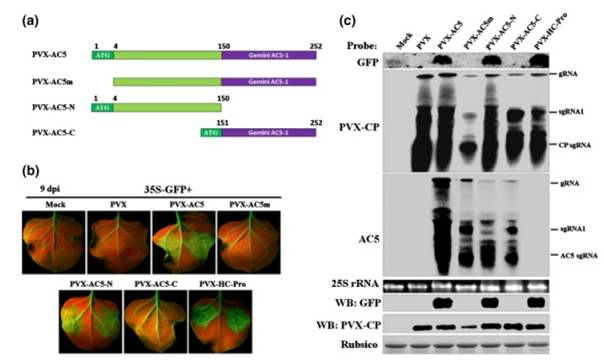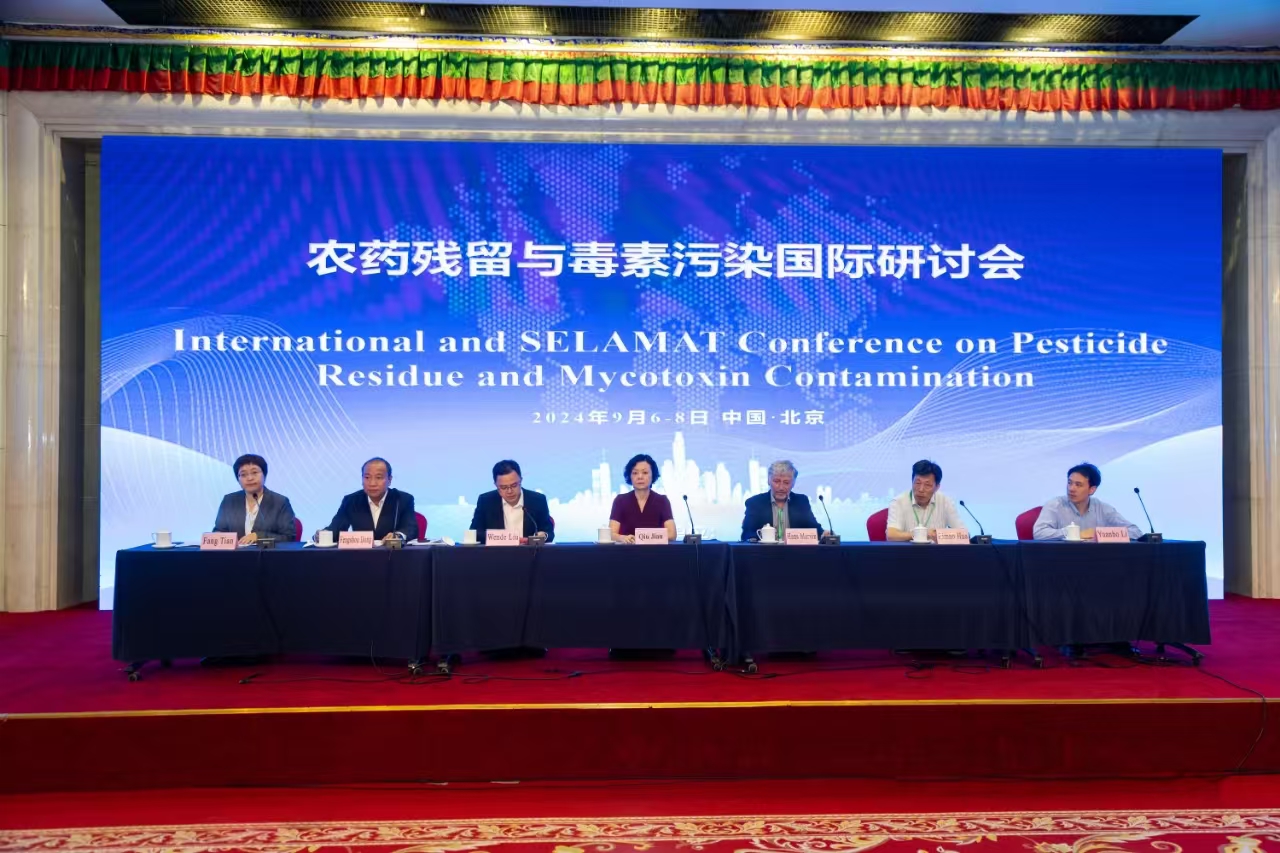The AC5 protein encoded by Mungbean yellow mosaic Indiavirus is a pathogenicity determinant that suppresses RNA silencing-based antiviral defenses
The molecular features of begomovirus genomes have been thoroughly characterized, with the functions of most genes being well understood. Although an increasing number of begomoviruses have been annotated to contain an AC5/C5 ORF, little is known regarding its function during virus infection. Recently, the scientist in the Institute of Plant Protection has made a great progress in research on the function of the AC5 protein. Recently, the related research results have been published in New Phytologist. The AC5 C-terminal domain is responsible for transcriptional gene silencing (TGS) suppression, severe symptoms and necrotic responses This work was supported by grants from the National NaturalScience Foundation of China (31390422 and U1136606), the National Key Basic Research and Development Program ofChina (2012CB114004) and the Zhejiang Provincial Natural Science Foundation for Outstanding Young Scientists (LR12C14001). For more information, please visit:
It is generally accepted that begomoviruses in the family Geminiviridae encode four proteins (from AC1/C1 to AC4/C4) using the complementary-sense DNA as template. Although AC5/C5 coding sequences are increasingly annotated in databases for many begomoviruses, the evolutionary relationships and functions of this putative protein in viral infection are obscure. In this study, the scientists in IPP-CAAS demonstrated several important functions of the AC5 protein of a bipartite begomovirus, Mungbean yellow mosaic India virus (MYMIV). Comparison of wild-type and ac5 mutant MYMIV viruses demonstrated that AC5 had a critical role in infection. Furthermore, they confirmed that AC5 activity affected symptom phenotypes, and suppressed both PTGS and TGS. The results demonstrated that MYMIV AC5 was a pathogenicity determinant and a potent RNA silencing suppressor that employed novel mechanisms to suppress antiviral defenses, and suggested that the AC5 function may be conserved among many begomoviruses.

The AC5 N-terminal domain suppresses post-transcriptional gene silencing (PTGS)

http://onlinelibrary.wiley.com/doi/10.1111/nph.13473/full
-
 China-Laos Training Workshop on Integrated Management of Destructive Crop Pests and Diseases Successfully held in Laos
China-Laos Training Workshop on Integrated Management of Destructive Crop Pests and Diseases Successfully held in Laos -
 New Plant Protection: New challenge and new opportunity for plant protection
New Plant Protection: New challenge and new opportunity for plant protection -
 International and SELAMAT Conference on Pesticide Residue and Mycotoxin Contamination Held in Beijing
International and SELAMAT Conference on Pesticide Residue and Mycotoxin Contamination Held in Beijing -
 CAAS President Meets Chairman of ASEAN FAW Taskforce
CAAS President Meets Chairman of ASEAN FAW Taskforce
